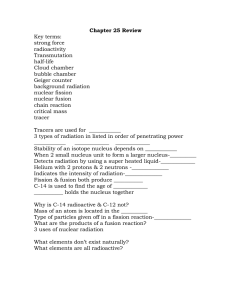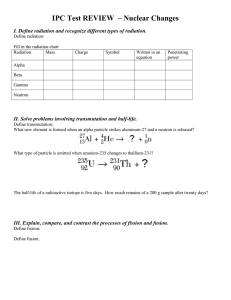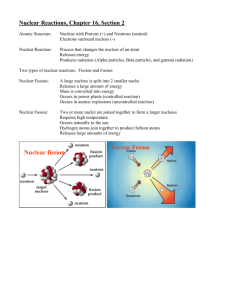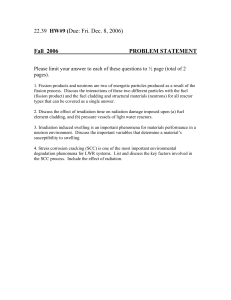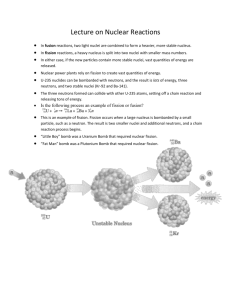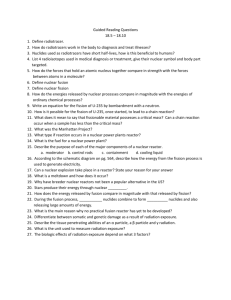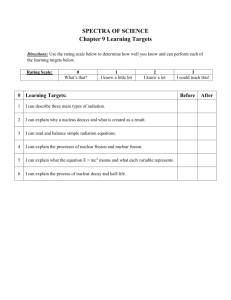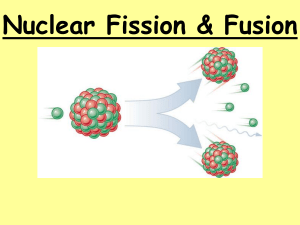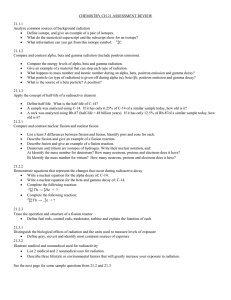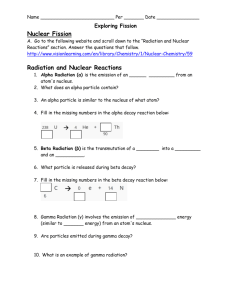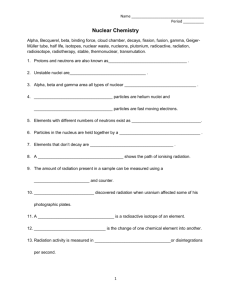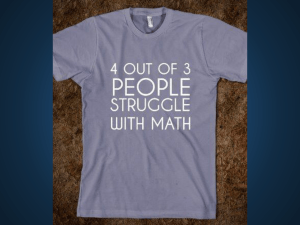Nuclear Radiation WS
advertisement
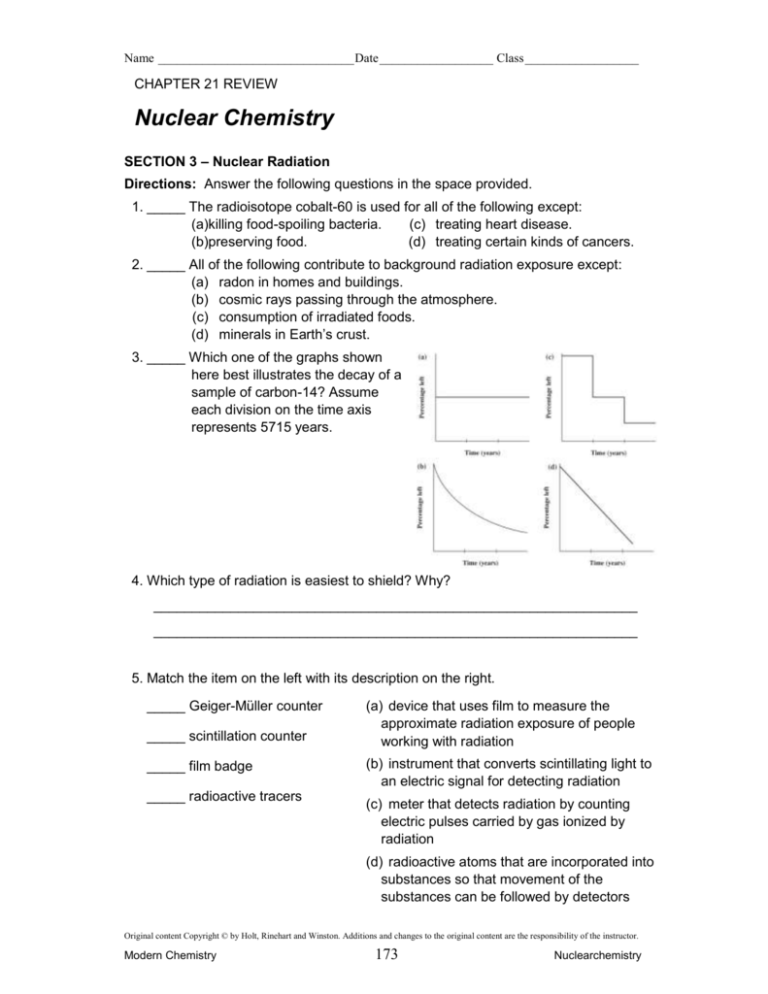
Name _______________________________ Date __________________ Class __________________ CHAPTER 21 REVIEW Nuclear Chemistry SECTION 3 – Nuclear Radiation Directions: Answer the following questions in the space provided. 1. _____ The radioisotope cobalt-60 is used for all of the following except: (a)killing food-spoiling bacteria. (c) treating heart disease. (b)preserving food. (d) treating certain kinds of cancers. 2. _____ All of the following contribute to background radiation exposure except: (a) radon in homes and buildings. (b) cosmic rays passing through the atmosphere. (c) consumption of irradiated foods. (d) minerals in Earth’s crust. 3. _____ Which one of the graphs shown here best illustrates the decay of a sample of carbon-14? Assume each division on the time axis represents 5715 years. 4. Which type of radiation is easiest to shield? Why? _______________________________________________________________ _______________________________________________________________ 5. Match the item on the left with its description on the right. _____ Geiger-Müller counter _____ scintillation counter _____ film badge _____ radioactive tracers (a) device that uses film to measure the approximate radiation exposure of people working with radiation (b) instrument that converts scintillating light to an electric signal for detecting radiation (c) meter that detects radiation by counting electric pulses carried by gas ionized by radiation (d) radioactive atoms that are incorporated into substances so that movement of the substances can be followed by detectors Original content Copyright © by Holt, Rinehart and Winston. Additions and changes to the original content are the responsibility of the instructor. Modern Chemistry 173 Nuclearchemistry Name _______________________________ Date __________________ Class __________________ SECTION 4 – Nuclear Fission and Nuclear Fusion Directions: Answer the following questions in the space provided. 6. Match each of the following statements with the process(es) to which they apply, using one of the choices below: (1) fission only (3) both fission and fusion (2) fusion only (4) neither fission nor fusion _____ a. A very large nucleus splits into smaller pieces. _____ b. The total mass before a reaction is greater than the mass after a reaction. _____ c. The rate of a reaction can be safely controlled for energy generation in suitable vessels. _____ d. Two small nuclei form a single larger one. _____ e. Less-stable nuclei are converted to more-stable nuclei. 7. Match the reaction type on the right to the statement(s) that apply to it on the left. _____ It requires very high temperatures. (a) uncontrolled fusion _____ It is used in nuclear reactors to make electricity. (b) uncontrolled fission _____ It occurs in the sun and other stars. (c) controlled fusion (d) controlled fission _____ It is used in atomic bombs. 8. Match the component of a nuclear power plant on the right to its use on the left. _____ limits the number of free neutrons (a) moderator _____ is used to slow down neutrons (b) fuel rod _____ drives an electric generator (c) control rod _____ provides neutrons by its fission (d) shielding _____ removes heat from the system safely (e) coolant _____ prevents escape of radiation (f) turbine 9. _____ A chain reaction is any reaction in which a. excess reactant is present. b. the material that starts the reaction is also a product. c. the rate is slow. d. many steps are involved. Original content Copyright © by Holt, Rinehart and Winston. Additions and changes to the original content are the responsibility of the instructor. Modern Chemistry 174 Nuclearchemistry
